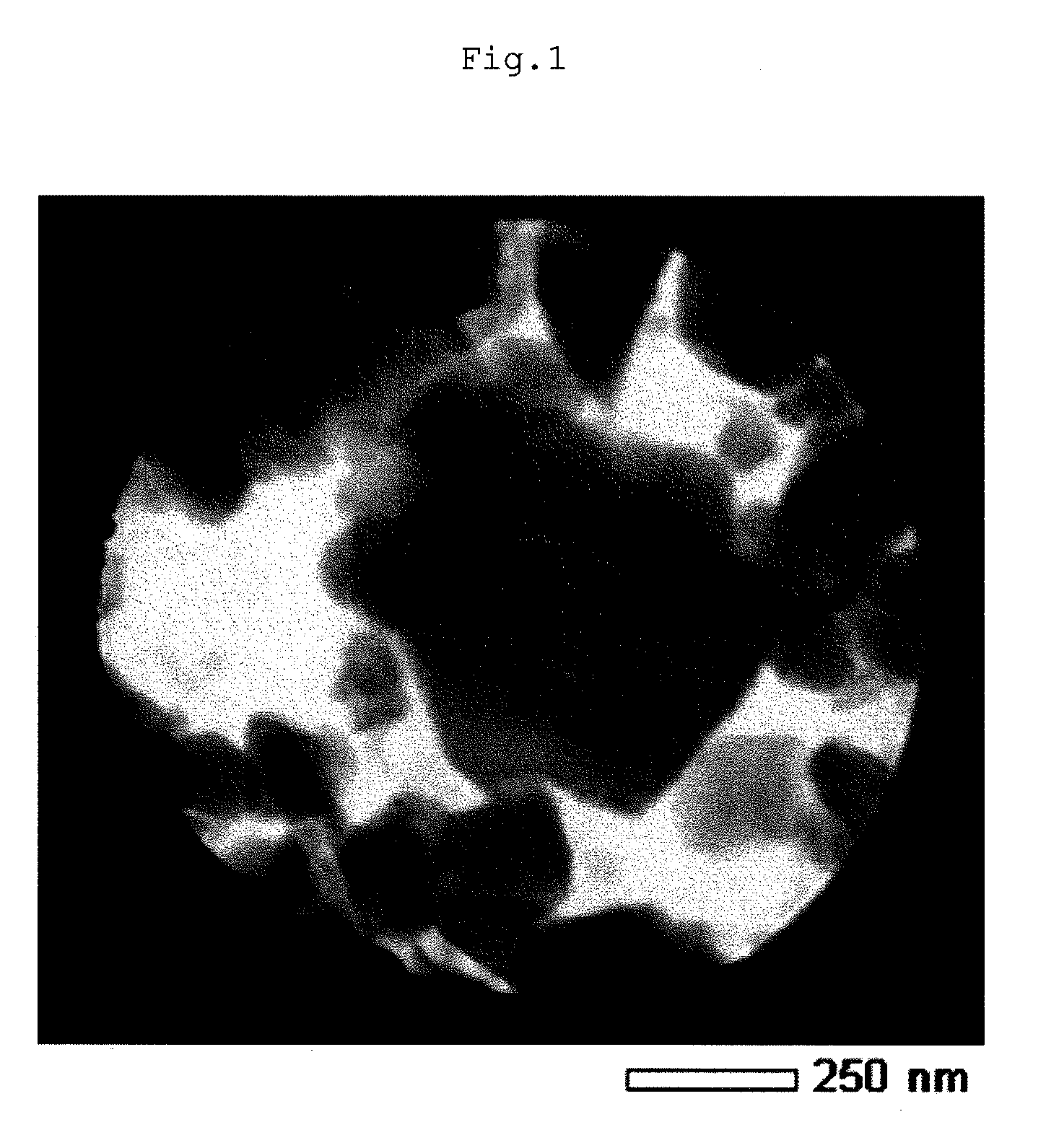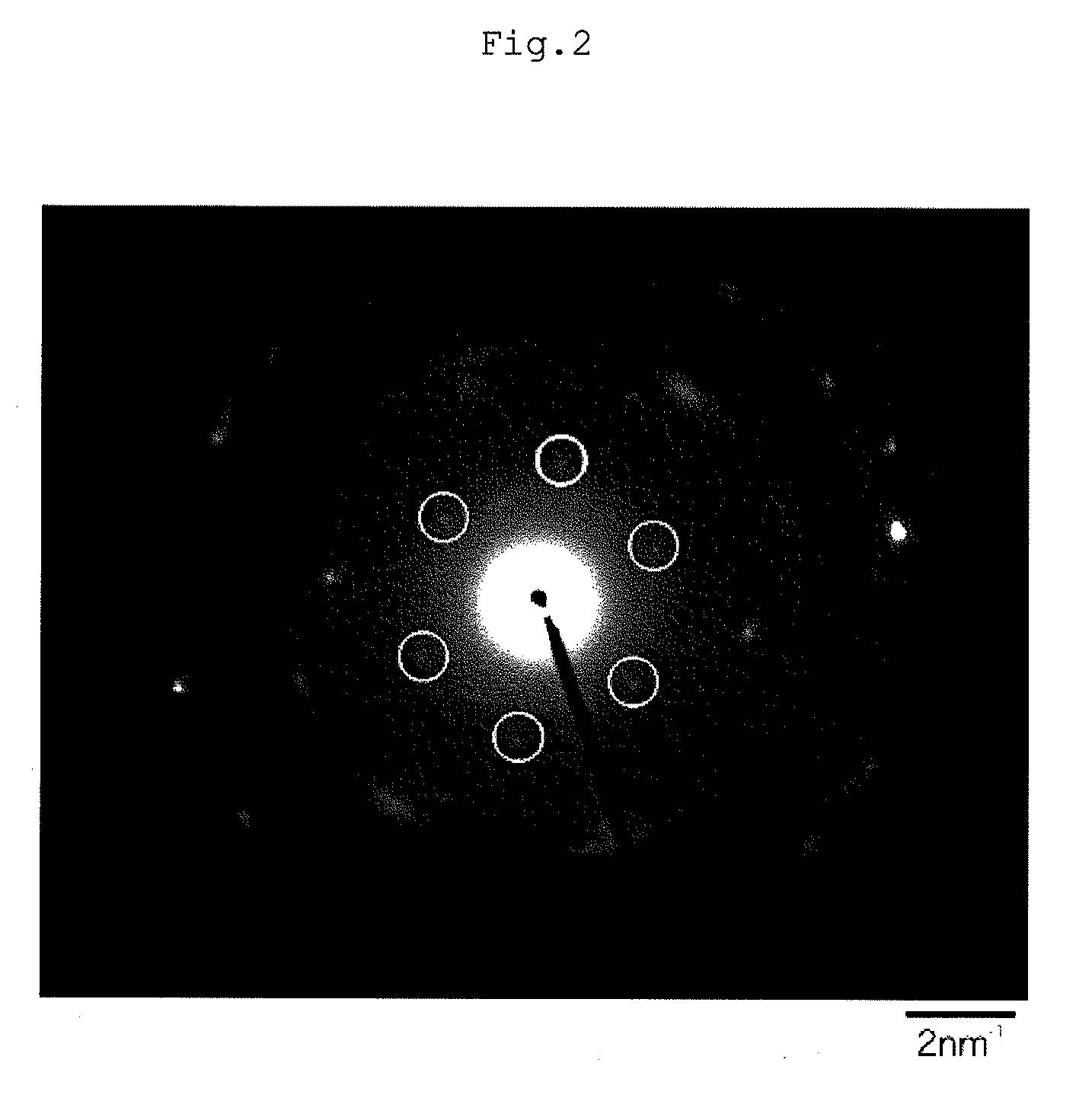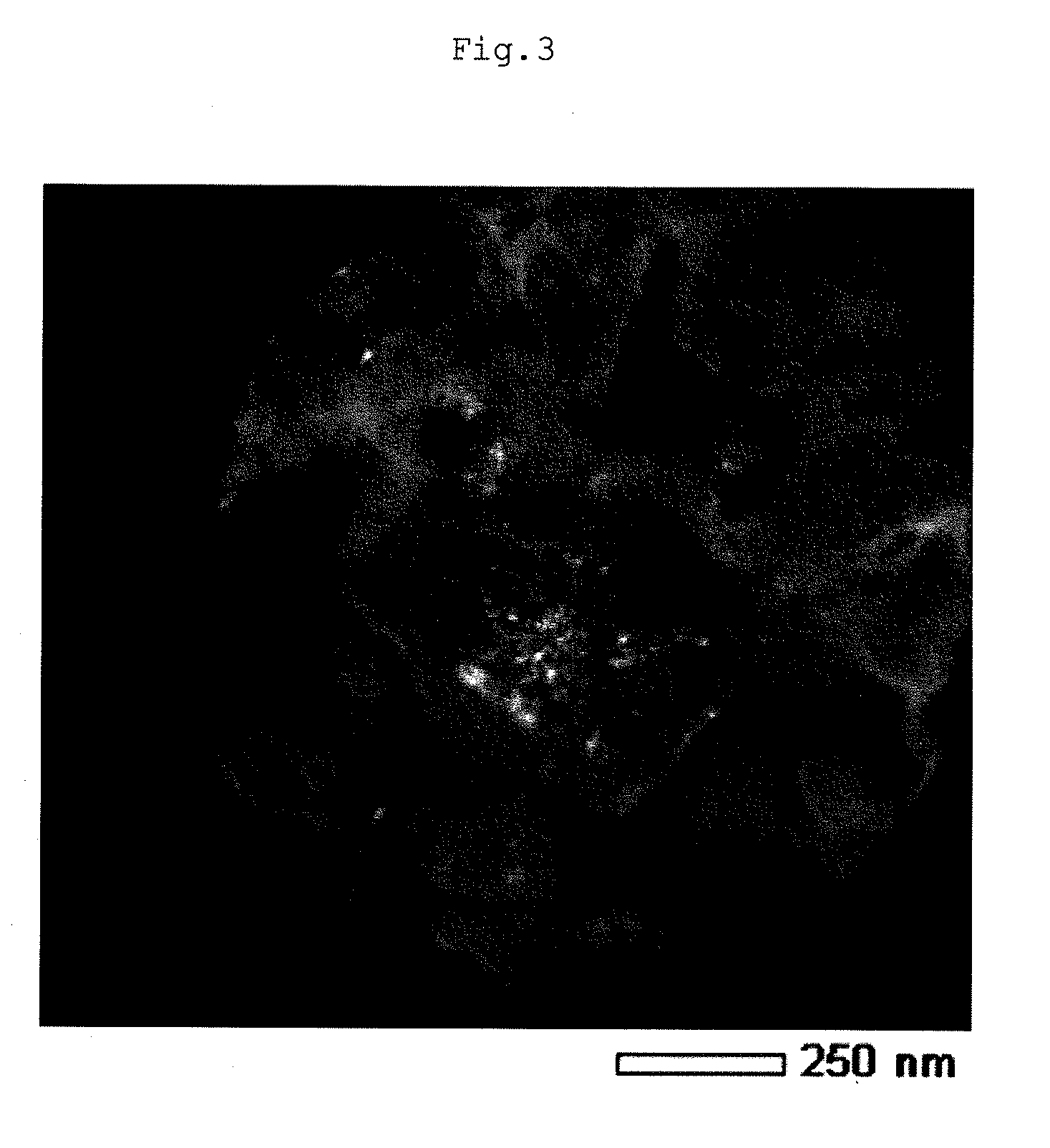Lithium composite metal oxide and nonaqueous electrolyte secondary battery
a technology of composite metal oxide and secondary battery, which is applied in the direction of cell components, electrochemical generators, and nickel compounds, can solve the problems of unsatisfactory capacity retention of batteries, and achieve the effects of improving capacity retention, high current rate, and high outpu
- Summary
- Abstract
- Description
- Claims
- Application Information
AI Technical Summary
Benefits of technology
Problems solved by technology
Method used
Image
Examples
example 1
1. Production of a Lithium Composite Metal Oxide
[0144]The process until the hydrothermally treated product was obtained was carried out in the same manner as in Comparative Example 1. The hydrothermally treated product was taken out of the autoclave and then subjected to decantation using distilled water. The decanted product was then filtered and washed with water, followed by drying at 100° C. to obtain a dried product.
[0145]In a dry mixing, 2.0 g of the above dried product and 0.894 g of lithium hydroxide monohydrate were mixed using an agate mortar to obtain a mixture. Then, the mixture was then placed in an alumina burning container, followed by baking at 800° C. in the air for 6 hours by using an electric furnace. The baked product was cooled to room temperature, pulverized and washed by decantation using distilled water, followed by filtration and the obtained residue was dried at 100° C. for 8 hours to obtain a powder B1.
[0146]As a result of the analysis of the composition o...
example 2
1. Production of a Lithium Composite Metal Oxide
[0152]A powder B2 was obtained in the same manner as in Example 1 except that 2.0 g of the dried product and 1.79 g of lithium hydroxide monohydrate were mixed in a dry mixing by using an agate mortar to obtain a mixture.
[0153]As a result of the analysis of the composition of the powder B2, it was found that the molar ratio of Li:Ni:Mn:Co was 1.55:0.40:0.50:0.10. Also, the BET specific surface area of B2 was 4.0 m2 / g.
[0154]In the powder X-ray diffraction pattern of the powder B2, a diffraction peak (diffraction peak B) showing the maximum intensity could be confirmed at an angle 2θ of 18.8°. In the pattern, diffraction peaks (diffraction peak A) observed at an angle 2θ range from 20° to 23° were confirmed at an angle 2θ of 20.9°. When the intensity of the diffraction peak B was set to 100, the intensity of the diffraction peak A was 3.8. Also, as a result of Rietveld analysis, the crystal structure of B2 was belonging to both hexagonal...
example 3
1. Production of a Lithium Composite Metal Oxide
[0157]A powder B3 was obtained in the same manner as in Example 1 except that 2.0 g of the dried product and 3.58 g of lithium hydroxide monohydrate were mixed in a dry mixing by using an agate mortar to obtain a mixture.
[0158]As a result of the analysis of the composition of the powder B3, it was found that the molar ratio of Li:Ni:Mn:Co was 1.57:0.40:0.49:0.11. Also, the BET specific surface area of B3 was 3.8 m2 / g.
[0159]In the powder X-ray diffraction pattern of the powder B3, a diffraction peak (diffraction peak B) showing the maximum intensity could be confirmed at an angle 2θ of 18.8°. In the pattern, diffraction peaks (diffraction peak A) observed at an angle 2θ ranging from 20° to 23° could be confirmed at an angle 2θ of 20.80. When the intensity of the diffraction peak B was set to 100, the intensity of the diffraction peak A was 4.2. Also, as a result of Rietveld analysis, the crystal structure of B3 was belonging to both hex...
PUM
| Property | Measurement | Unit |
|---|---|---|
| 2θ | aaaaa | aaaaa |
| temperature | aaaaa | aaaaa |
| voltage | aaaaa | aaaaa |
Abstract
Description
Claims
Application Information
 Login to View More
Login to View More - R&D
- Intellectual Property
- Life Sciences
- Materials
- Tech Scout
- Unparalleled Data Quality
- Higher Quality Content
- 60% Fewer Hallucinations
Browse by: Latest US Patents, China's latest patents, Technical Efficacy Thesaurus, Application Domain, Technology Topic, Popular Technical Reports.
© 2025 PatSnap. All rights reserved.Legal|Privacy policy|Modern Slavery Act Transparency Statement|Sitemap|About US| Contact US: help@patsnap.com



